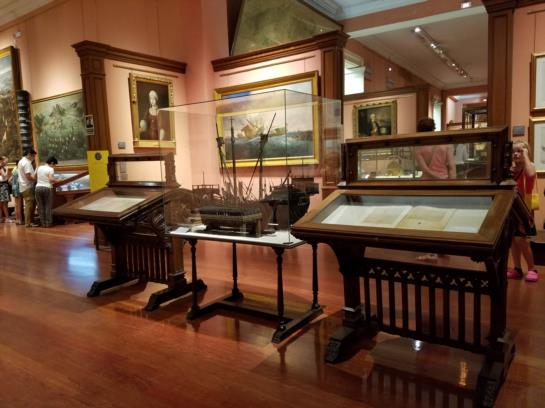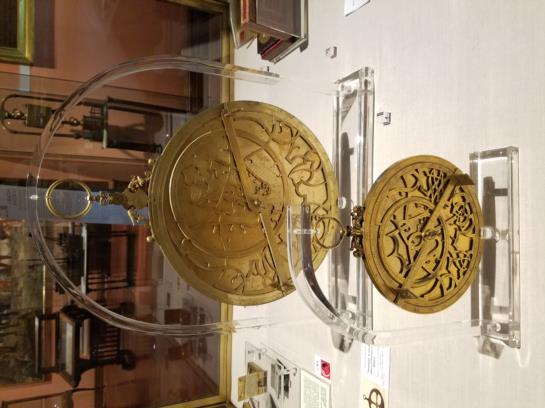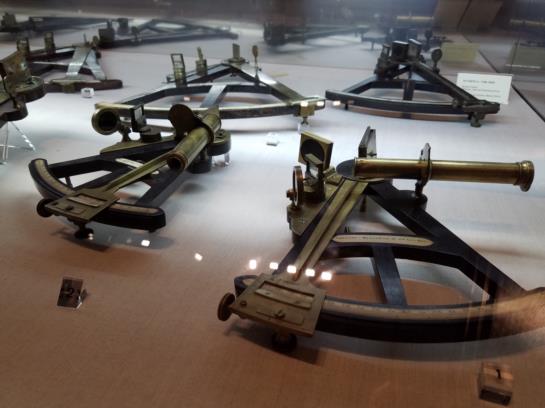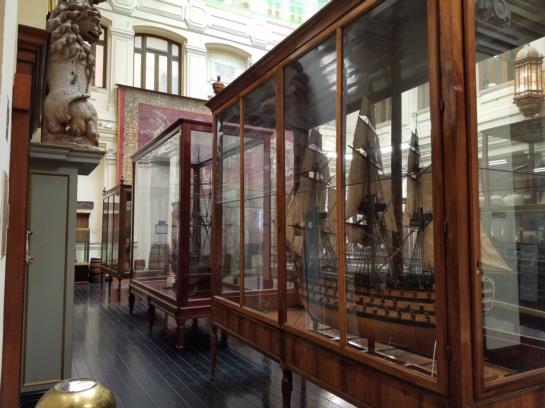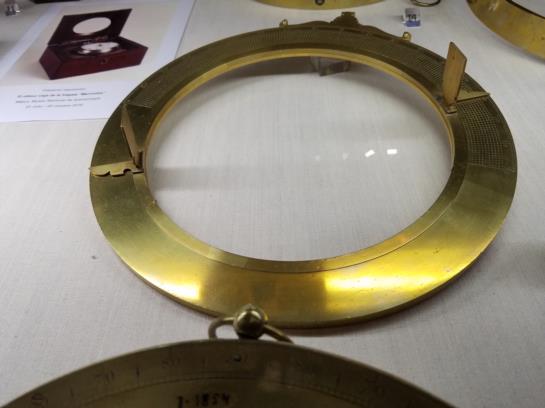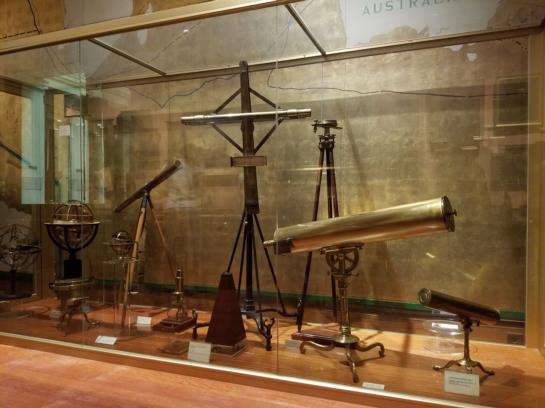
NavList:
A Community Devoted to the Preservation and Practice of Celestial Navigation and Other Methods of Traditional Wayfinding
From: Ed Popko
Date: 2016 Aug 2, 06:19 -0700
The Museo Naval in Madrid is a treasure trove of Spanish maritime history. The collection is world class; a must-see if you are able.
Of particular interest to NavList subscribers is the navigation collection from the reign of the Catholic Monarchs and Christopher Columbus in the 15th century up to and through the 19th century.
Navigation artifacts are exhibited in several rooms. Of particular note are lovely astrolabes (classic planispheric designs and marine), dozens of sextants, chronometers, artificial horizons, pelorus, compasses, charting instruments, traverse boards, chip logs and triangulation devices for coastal charting.
There are large exhibition galleries with wonderful ship models and shipbuilding displays.
Attached are some samples. I have included a close-up of an unusual brass concentric-ring design marine astrolabe, I have not seen this design before.
It’s clear from exhibit maps and voyage chronologies by dozens of navigators that two people - Queen Isabella of Spain and Columbus in the late 15th century - set off one of the largest migrations of people, goods and culture in human history.
While Columbus many not have been a very good administrator of his newly discovered lands, his initial voyages proved that easting-westing latitude sailing could take you to another continent and return to the same places later. His dead recokning day-counts were one of the first estimations of west longitude from Europe. In less than fifteen years from his initial discovey, a rapid succession of voyages by other navigators, some private others sponsored by Isabella, established strategic ports in Central America, the Caribbean, parts of Florida and northern South America. This opened new trade routes and began the conquest and exploitation (mostly tragic) of the Americas.
I highly recommend the Museo Naval de Madrid. For 3 Euros, less than $4, there is no better education in navigation and its consequences in human history.
Ed Popko
